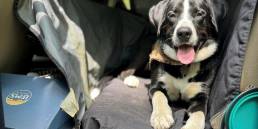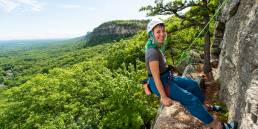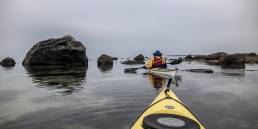Sure, we all care about the safety of others in the backcountry. But it takes a special group of people to put in the work to making their ski community a little bit safer. Andrew Crockett, MD is the champion of a group working to build an avalanche beacon training park at Pinkham Notch below Mount Washington. We caught up with Crockett to talk about the project, his passion for it, and the team behind him making it happen. Donate below!

goEast: What’s your personal history with backcountry skiing, Pinkham Notch, and Mount Washington? How and for how long have you personally used the area? What’s your connection to it?
Crockett: So, I grew up in Salt Lake City. It’s hard not to be enchanted by the Wasatch Mountains that overlook the Salt Lake Valley, there. I spent a lot of my youth climbing and trekking, snowshoeing and skiing in those mountains but I was always drawn more to the backcountry experience than the on-piste world. I always had a goal of spending more ski days in the backcountry than inbounds, even though I usually had a season pass to a local spot. At one point, I was spending 25-plus days per winter touring the Wasatch Mountains.
Since moving to New Hampshire, I’ve tried to rekindle my love of backcountry skiing, snowshoeing and climbing. Mount Washington is the obvious place for this passion to play out. I look forward again this year to being part of that eclectic community of skiers and riders earning their turns, snowshoers out for the beauty of the winter world and climbers rising to the next challenge. The culture and passion of the Mount Washington crowd is truly something unique and inspiring.
goEast: Was avalanche safety always a big part of your mindset?
Crockett: Honestly, no. When I think back on it, it’s kind of a miracle that I’m still even alive. It wasn’t until I had a classmate in medical school die in an avalanche while snowshoeing an area in Utah that I had travelled dozens of times that I really started taking my safety seriously. From there I began working to be as safe as I could. I listened to the forecasters every morning, even if I had no plans to ski that day, just so I could understand the building snowpack. I’d work on beacon skills with my wife (the best ski partner ever) during the off season by hiding a beacon in a grocery store or in the woods on a hike and having the other find it. Avalanche safety became a bit of an obsession, but it wasn’t initially.
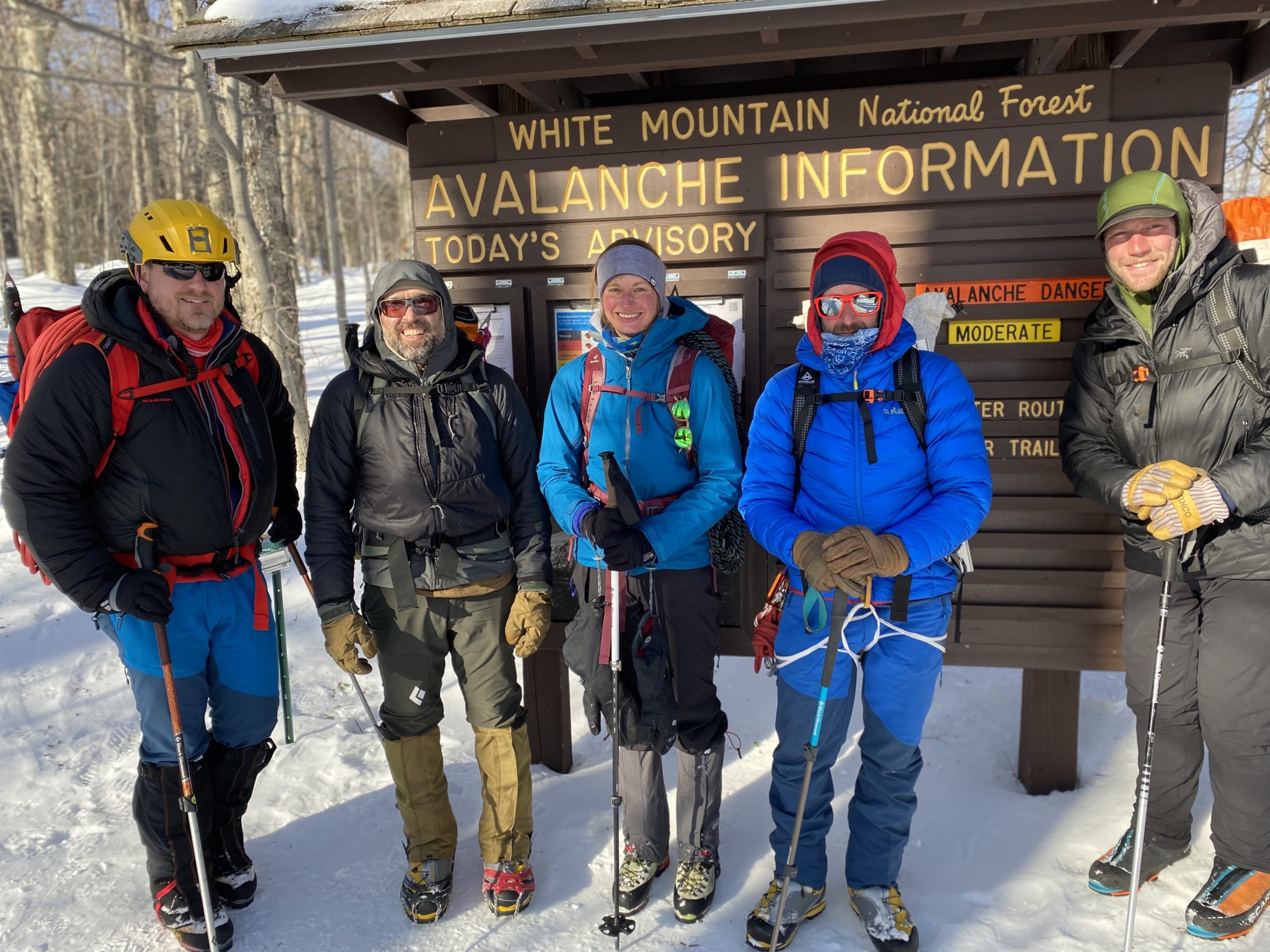
goEast: Obviously you’re not alone in that “obsession.” Who is the team you’re working on this big project with?
Crockett: We are the Wilderness and Austere Medicine group at Dartmouth-Hitchcock Medical Center and Geisel School of Medicine at Dartmouth. Our team is made up of physicians and medical students at Dartmouth with a passion for the wilderness. While we all come from a different area of expertise, we are drawn together by a singular vision of being able to care for any patient with any problem in any situation, including in some of the most austere and remote places on the planet. While we enjoy the wilderness ourselves, we also feel that it is important for everybody to have the opportunity to experience wild places as well. Our concern and dedication to caring for patients wherever we may find them also leads to the desire to educate and improve the safety and health of each backcountry traveler.
goEast: Because an avalanche beacon training park doesn’t exist in the East yet, there are probably a lot of people who don’t really understand the value in a beacon park. Can you explain that a bit?
An avalanche beacon park is a place where you can practice your beacon search skills. A beacon search is actually quite difficult. The avalanche beacon itself is not like a GPS, the signal doesn’t give an exact location. Instead, a searching beacon is able to tell a general direction and distance to a transmitting beacon but this information can be difficult to interpret in some circumstances. A good, functional knowledge of beacon use and repeated, dedicated practice is imperative to effective and efficient searches. All this while under the time pressure of a friend or family member who is literally drowning under a sea of snow and ice. Avalanche beacon search skills should be practiced a lot.
And with something like this, which everyone will be able to come and use, our hope is that people will want to practice and to play a little before starting their backcountry adventure. The park will make being an excellent tool much more fun!
goEast: How did you and your team come up with this idea? What’s the story behind it?
Crockett: This past March [2021], many of our Wilderness Medicine team had the opportunity to take an AIARE 1 class at Mount Washington. Our group consisted of several physicians, a wilderness medicine fellow and multiple medical students. While we were in the course, we enjoyed practicing the beacon searches which are a hallmark of the AIARE curriculum: Bury a beacon in the snow and try to find it as quickly as possible. It was actually our instructor who mentioned the concept of a beacon park and how such an installation would make it easier for all avalanche educators and backcountry travelers in the region to improve their avalanche search and locate skills. This idea caught fire with us. What a great way to improve the health and safety of our population by providing for this simple yet meaningful opportunity. We got to work pretty quickly.

goEast: What has that work been like so far?
Crockett: We have been honored to have partnered with the Mount Washington Snow Rangers (shoutout to Frank Carus) and the Friends of Tuckerman Ravine (and shoutout to Jon Erickson and Jake Risch) to really launch this project. Both of these groups have been so welcoming to our ambitions and instrumental in garnering the support of the US Forest Service and Appalachian Mountain Club for the planned beacon park. We had to get buy-in from all of them to make it happen. From there, the biggest part of the project has been the fundraising to buy and maintain the beacon park equipment itself. These consoles are a bit of a specialty item so they are quite expensive. Once the equipment has been purchased, we are excited to install the park for all backcountry users to enjoy and learn from. Donate here!
goEast: So, once you’ve raised the money, what will it actually take to get built? Do you have a guess for a timeline?
Crockett: Once the fundraising goal has been met, we will be able to purchase the beacon park equipment. Installing the park will then just be a matter of securing the base station where users will be able to start their practice and burying the various emitters in the snow around the base station. We will install some basic instructions and signs to direct users to the area and to give them hints on how to use the equipment most effectively. We hope to be able to install more permanent signage and various other facilities once the ground thaws. Unfortunately, we were too late this year to have the permanent plan completed before the onset of winter but the park will still be up and operational for the bulk of this season.
goEast: What will the maintenance/upkeep of this look like?
Crockett: Luckily, our team has a group of passionate and dedicated medical students who are committed to ensuring that the beacon park experience be as fulfilling as possible. We plan to re-arrange the target transmitters several times each season to ensure that the park is always a new experience, even for repeat visitors. Battery changes and equipment failures are planned for as well. We will do our best to ensure the beacon park is functional and welcoming to anyone wanting a little practice at the trailhead. Other that that, we expect that Mother Nature will take care of the rest by providing a good blanket of excellent snow on a frequent basis to refresh and renew the park for the visitor.
Interested in supporting the Northeast’s first avalanche beacon training park? Donate here.
[donate]
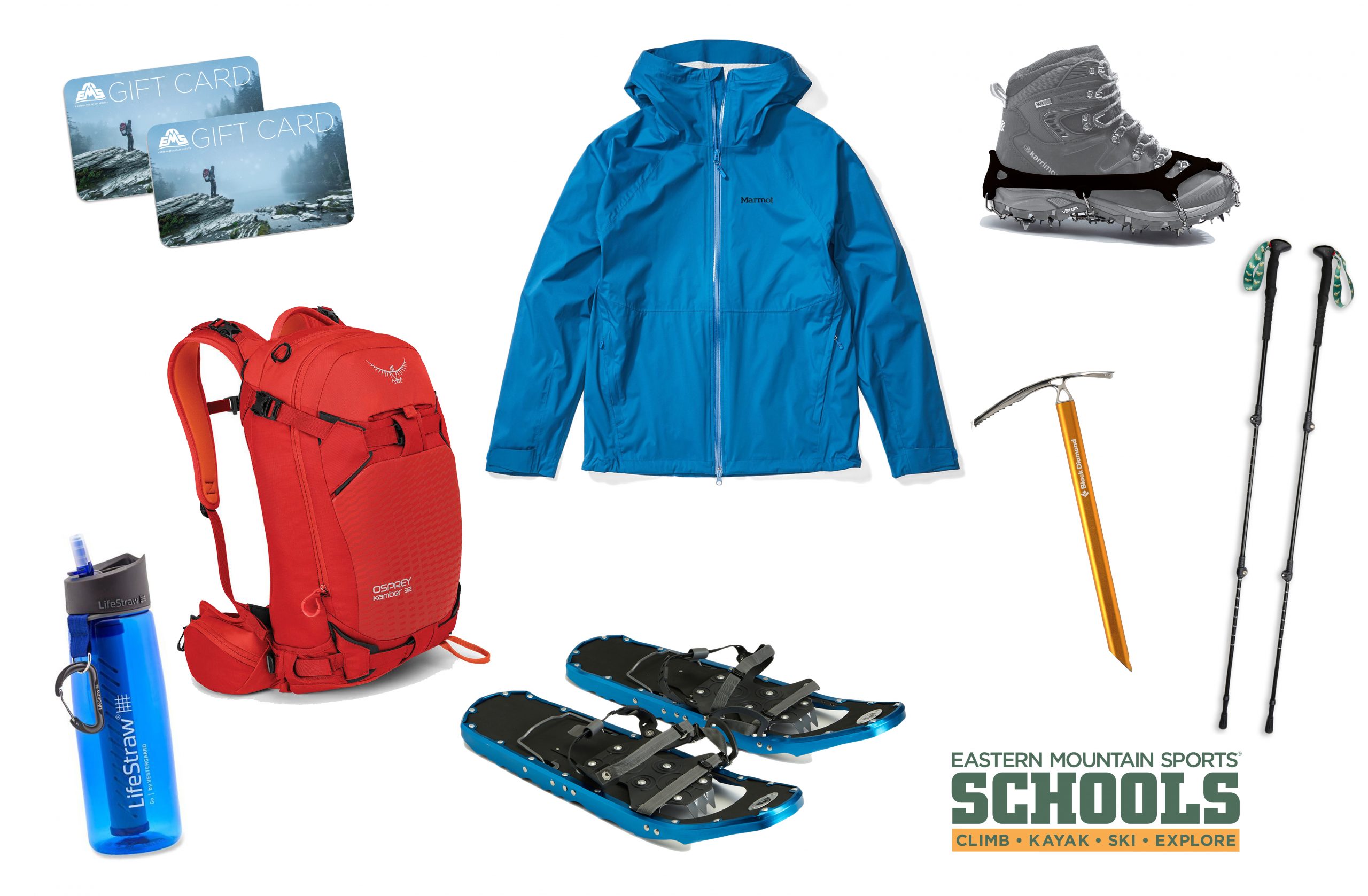
Each $25 donation will enter you to win a slew of prizes from Eastern Mountain Sports and other brands.
EMS will choose 10 winners to take home one of two $100 EMS Gift Cards, an EMS Schools course, a Marmot Jacket, an Osprey Pack, EMS Trail Snowshoes, EMS Trekking Poles, a Black Diamond Ice Axe, a pair of EMS Traction Spikes, and a LifeStraw Water Bottle.
[donate]

Each $25 donation will enter you to win a slew of prizes from Eastern Mountain Sports and other brands.
EMS will choose 10 winners to take home one of two $100 EMS Gift Cards, an EMS Schools course, a Marmot Jacket, an Osprey Pack, EMS Trail Snowshoes, EMS Trekking Poles, a Black Diamond Ice Axe, a pair of EMS Traction Spikes, and a LifeStraw Water Bottle.
Ryan Wichelns
Ryan was goEast's only editor from its launch in 2016 until 2023. Now, he's the founding editor of Trails Magazine, the only print publication for backpackers and people who sleep in the dirt. When he's not wordsmithing, he's skiing, hiking, mountain biking, trail running, and more in Colorado's San Juan Mountains and beyond.
Related Posts
April 24, 2024
What to Bring When Road Tripping with Your Dog
Prepare for the ultimate road trip with…


